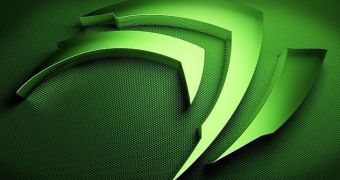NVIDIA has just announced that a new version of its Beta driver for the Linux platform, 340.17, has been released and is ready for download.
The new driver from NVIDIA is quite large, even for a Beta release, but the developers have integrated some very interesting changes and new features.
According to the changelog, various improvements and corrections have been made to the information reported to GL applications via the KHR_debug and ARB_debug_output extensions, a bug that caused the GLX applications that simultaneously created drawables on multiple X servers to crash when swapping buffers has been fixed, and the nvidia-settings option has been updated to report all valid names for each target when querying target types, e.g. “nvidia-settings -q gpus.”
Also, support has been added for controlling the availability of Fast Approximate Antialiasing (FXAA) on a per-application basis via the new __GL_ALLOW_FXAA_USAGE environment variable, a bug that occurred when indirect rendering could become corrupted on system configurations that disallow writing to executable memory has been fixed, and the runlevel check has been removed from the nvidia-installer.
Probably the most interesting new feature that has been added in this latest version of the NVIDIA driver is the support for G-SYNC monitors. This is a technology that allows the GPUs to sync with the refresh rate of the monitors, making the regular V-Sync option in various games obsolete.
This is actually very good news for the Linux users and it shows that NVDIA is really starting to consider the open source platform fit for gaming. More and more features regarding the performance in games are added with each new NVIDIA release, and it looks like the company is not stopping here.
NVIDIA also added just a few months ago the option to overclock the video card, which was a big breakthrough for the driver development on Linux, at least for this company.
Unfortunately, this is just the Beta and it will take a while to get these features into the stable release, but that's just a matter of time.
The NVIDIA developers provide a single binary file that should work on most Linux distributions out there, but installing it might require a little bit of expertise. You can also wait for this particular driver to arrive in the official repositories.
Check out the announcement for a complete list of fixes and improvements. You can download NVIDIA Linux Display Driver 340.17 for Linux 32-bit and 64-bit. Keep in mind that you will need to manually install the drivers on your system.
Remember that this is a development version and it should NOT be installed on production machines. It is intended for testing purposes only.

 14 DAY TRIAL //
14 DAY TRIAL //